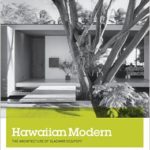A reprise of Michael’s blog entry about Honolulu from a couple of years ago. With Michael and Keith just back from a month there, new entries about the built environment in Honolulu will follow.
 The risk run when one speaks of preservation is always of marking oneself out as exclusionary, or put another way, ‘I’ve got mine and can afford to keep it for my sole enjoyment.’ I’ll let you draw the ‘…and to hell with the rest of you’ implication. The other risk, of course, is to be considered an anachronist and consequently little regarded. As my father says from time to time, ‘If we all of us had foresight the way we have hindsight, we’d all be ahead by a damn sight.’ Descriptively put, and highly accurate. No, we can’t turn back the clock but in what matters is it not worthwhile to review and learn from what the fullness of time might have shown up as errors in judgment?
The risk run when one speaks of preservation is always of marking oneself out as exclusionary, or put another way, ‘I’ve got mine and can afford to keep it for my sole enjoyment.’ I’ll let you draw the ‘…and to hell with the rest of you’ implication. The other risk, of course, is to be considered an anachronist and consequently little regarded. As my father says from time to time, ‘If we all of us had foresight the way we have hindsight, we’d all be ahead by a damn sight.’ Descriptively put, and highly accurate. No, we can’t turn back the clock but in what matters is it not worthwhile to review and learn from what the fullness of time might have shown up as errors in judgment?
The building of the Ala Wai Canal in the 1920’s, indeed all the alteration of the natural environment in Hawaii and elsewhere that rocketed forward beginning in the early years of the last century were byproducts of what seemed the eternal watchword for all that was good in society- progress. In an effort to bring about what was thought the best for the most, what was existing, in both the natural and built environments, was thought if not actually bad, then at least suspect. The natural environment was exploited for what it was then considered- a malleable raw material that, with man’s active involvement, could always be improved. Although the confidence in man’s abilities reflects the tenor of those recent times, even at this near term vantage point we can agree that, to a large extent, that confidence was actually hubris.
What appeared as gradual improvement then became a juggernaut that, surprisingly, still proceeds apace. Mindsets changed to those more reflective that seek to slow, eliminate, or even reverse earlier errors in environmental judgment even now seldom win out over the mindset so fervently embraced in the last century. I was surprised, for example, when watching a broadcast of the Kamehameha School’s Song Contest to hear one of the young participants explain his future goal to become the Donald Trump of Hawaii. How surprising it was to hear, given the level of immersion in traditional Hawaiian culture of all Kam School students- one would presume the predominant movement, to the exclusion of all others, would be to stop, if not reverse, the predations wrought by real estate developers. I would argue that the world can ill afford one Donald Trump. Astonishing that anyone in Hawaii would propose there might be room for two.
 A few years ago, the Honolulu Museum of Art hosted an exhibition of the work of the late Honolulu architect Vladimir Ossipoff. I believe the excellent book and catalog prepared by curator Dean Sakamoto is still in print and it is worth a read. What one takes away from it is the effort Ossipoff made, certainly at the height of his career, to use contemporary materials and link them sympathetically with the natural environment to yield what might be termed built organicism. Something that, while manmade for man’s use and while fully functional, nevertheless articulates properly- by which I mean as an adjunct not as an intrusion- with its setting. One seldom sees high rise buildings that accomplish this- unless they’re mid rise Ossipoff designs.
A few years ago, the Honolulu Museum of Art hosted an exhibition of the work of the late Honolulu architect Vladimir Ossipoff. I believe the excellent book and catalog prepared by curator Dean Sakamoto is still in print and it is worth a read. What one takes away from it is the effort Ossipoff made, certainly at the height of his career, to use contemporary materials and link them sympathetically with the natural environment to yield what might be termed built organicism. Something that, while manmade for man’s use and while fully functional, nevertheless articulates properly- by which I mean as an adjunct not as an intrusion- with its setting. One seldom sees high rise buildings that accomplish this- unless they’re mid rise Ossipoff designs.
